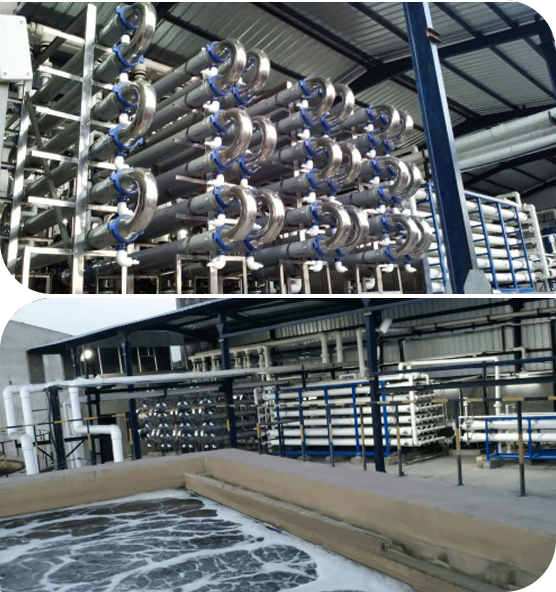
Waterman Engineers Australia has become the leading companies of Zero Liquid Discharge program. A ZLD technique is often a procedure system which is used to eliminate all the liquid squander from a method. The objective of ZLD water procedure is to lessen wastewater economically and develop potable drinking water which is match for normal use. Zero discharge procedure is a sophisticated therapy method that comprises ultrafiltration, reverse osmosis, evaporation and fractional electro deionization. And we have been a effectively-recognized provider of ZLD techniques.
In several Industries, for example electrical power, oil & fuel, chemical substances, mining and others, a great deal of wastewater is generated that needs to be managed. Conventionally, this discharge of wastewater is finished through a plant outfall to a surface area h2o entire body like an evaporation pond, or occasionally deep effectively injected. These tactics bring about lots of environmental considerations by the general public in several regions of the earth, as h2o is actually a scarce supply and its administration ought to be monitored. These worries have resulted in the establishment of ZLD processes by a lot of industries to reduce their environmental footprint and enhance sustainability. And, Waterman Engineers Australia are greatest ZLD suppliers yow will discover for this system.
PROPERTIES OF ZERO LIQUID DISCHARGE Program
The Houses of the Zero Liquid Discharge process can vary with regards to the precise structure and technologies employed. Even so, some widespread Houses of ZLD devices include things like:
H2o Conservation: Considered one of the key aims of ZLD programs is usually to conserve water by reducing the discharge of liquid squander in to the surroundings.
Higher Water Purity: ZLD units are built to make substantial-top quality water that may be absolutely free from impurities and contaminants, which makes them suitable for use in several industrial processes.
Flexibility: ZLD techniques tend to be designed to support a wide variety of input liquid streams, that makes them versatile and well suited for use in numerous industries.
Advanced Wastewater Cure: Zero liquid discharge methods use Highly developed wastewater treatment method methods to take away impurities and contaminants from the effluent, making higher-excellent h2o.
Waste Reduction: ZLD programs help minimize squander by reducing the volume of liquid waste that should be disposed of and by developing a concentrated, sound waste substance that can be securely disposed of.
Electricity Performance: ZLD systems could be Electricity-intense due to the higher Strength necessities of evaporation and other wastewater therapy processes. Nevertheless, improvements in technological innovation are building Zero liquid discharge units extra Electrical power-economical and price-productive.
Waterman Engineers Australia manufactures Zero Liquid Discharge (ZLD) devices built to clear away all liquid waste, aiming to supply potable water and minimize environmental impact. Their ZLD units ordinarily include things like ultrafiltration, reverse osmosis, evaporation, and fractional electro deionization. Critical technologies used are Slipping Film Brine Concentrators, Compelled Circulation Crystallizer, and Some others, by using a two-stage means of pre-concentration and evaporation/crystallization to recover and reuse h2o. These techniques are adaptable to different industries, emphasizing Zld System Manufacturer Zero Liquid Discharge System h2o conservation, large h2o purity, waste reduction, and Electrical power effectiveness. Technical requirements are diverse and customizable, looking at variables like h2o supply, move charge, and feed h2o high quality.
The necessity for Zero Liquid Discharge (ZLD) methods occurs from the necessity to handle environmental concerns connected with h2o scarcity and pollution. In industries like electricity, oil & fuel, and mining, huge amounts of wastewater are produced. Traditionally, this wastewater is discharged into bodies of water, resulting in air pollution and depleting clean water assets. ZLD units aim to minimize these impacts by dealing with and recycling wastewater in the economic process, thereby conserving water, lowering waste, and selling sustainability.
When thinking about the technological technical specs of the Zero Liquid Discharge (ZLD) system, essential facets to target include things like the drinking water supply it is going to take care of, the process's stream amount, the caliber of feed drinking water, the stages of therapy involved, the Restoration level of drinking water, approaches for concentrate disposal, supplies of construction, functioning disorders, and process automation and Regulate. These variables ensure the procedure's success, toughness, and efficiency in managing and recycling industrial wastewater.
Zero Liquid Discharge (ZLD) vegetation provide benefits which include drinking water conservation, squander reduction, and pollution avoidance, contributing to environmental sustainability. They're relevant in industries like electric power generation, oil and fuel, chemical substances, and mining, where they assist in handling industrial wastewater correctly, minimizing the ecological footprint, and complying with strict environmental restrictions. These techniques are very important in regions facing drinking water scarcity and for industries aiming to further improve their sustainability and operational efficiency.
FAQs for your Zero Liquid Discharge (ZLD) method generally address its operational rules, Price tag-usefulness, servicing specifications, environmental affect, applicability throughout numerous industries, and regulatory compliance. These inquiries assistance consumers fully grasp the system's Rewards, complex requires, and suitability for his or her specific wastewater management wants.
1. Zero Liquid Discharge (ZLD) is often a wastewater procedure process created to remove all liquid waste.
2. The technique's parts are motivated by the particular industrial approach, wastewater composition, and regulatory necessities.
three. Effluent cure crops clear away pollutants from textile effluents to forestall environmental contamination.
four. Strengths include things like drinking water conservation, pollution reduction, and regulatory compliance.
5. The goal is to attenuate environmental effects by recycling h2o and minimizing waste.
6-nine. Effluent treatment method vegetation are stages in wastewater treatment: Most important (Bodily separation), secondary (biological treatment), and tertiary (advanced procedure).
ten. Unit functions incorporate filtration, sedimentation, biological procedure, and disinfection.
eleven. Limiting parameters are components that influence the remedy's performance, like pH and contaminant focus.
twelve. Layout factors include stream charge, effluent composition, and desired high-quality of taken care of h2o.